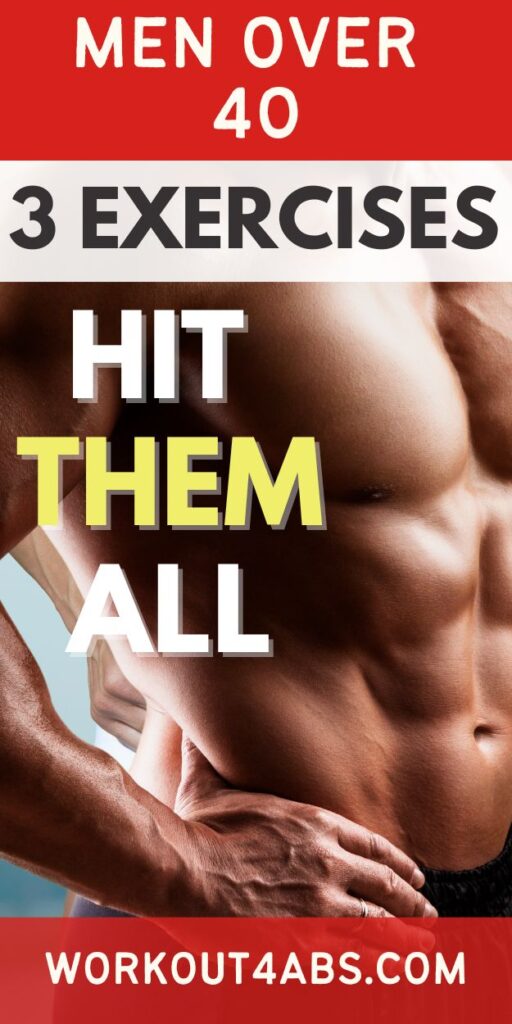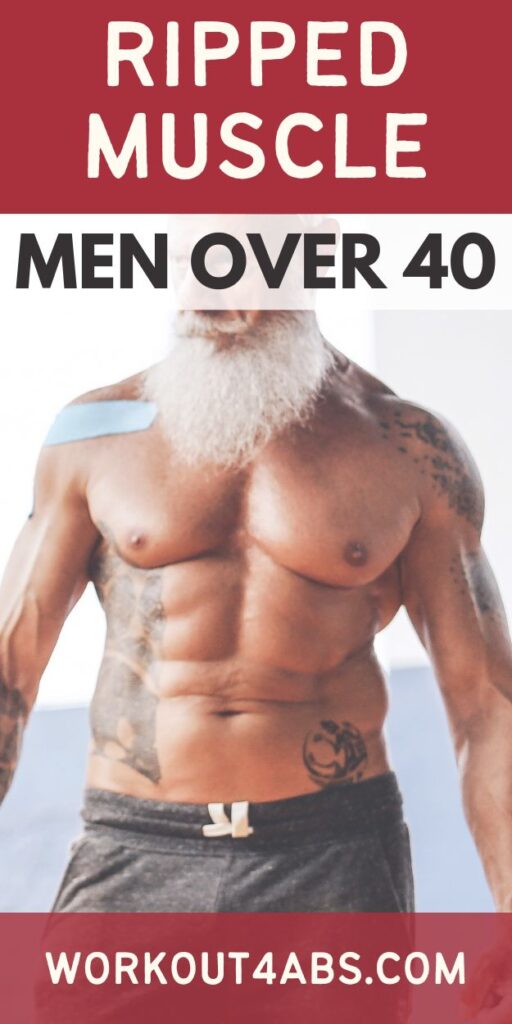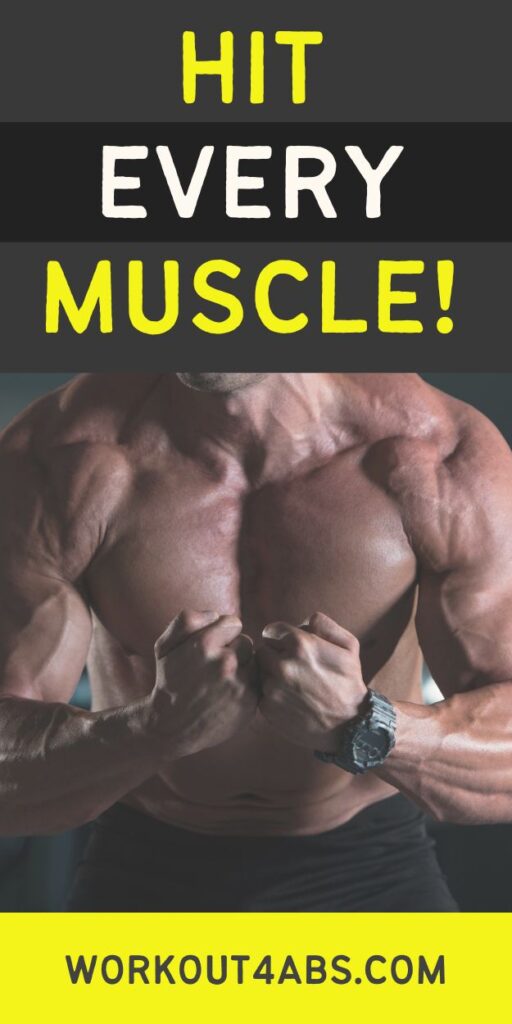Exercises for men over 40 need to be impactful especially when striving to build muscle effectively. You need to select exercises that deliver optimal results. In this article, we delve into the three most impactful “bang for your buck” exercises that offer a potent combination of efficiency and muscle-building potential for men over 40.
If you enjoyed these tips, please save this pin to your Pinterest Board.
Low Incline Bench Press
The incline bench press offers distinct advantages over the flat bench press by providing increased activation of both the pectoral muscles (pecs) and the deltoid muscles. This makes it a valuable addition to your chest workout routine.
- Enhanced Upper Chest Activation: The incline bench press involves setting the bench at an angle, usually around 30 to 45 degrees. This alteration in bench angle targets the upper portion of the pectoral muscles (clavicular head) more effectively. As you press the weight upward, the incline position engages the upper chest muscles to a greater extent than the flat bench press. This promotes balanced chest development and an aesthetically pleasing chest shape.
- Greater Deltoid Engagement: The incline angle of the bench also impacts the recruitment of the anterior deltoid muscles, which are situated at the front of the shoulders. As you push the weight during the incline bench press, the deltoids are more involved due to the changed angle of force application. This simultaneous activation of the deltoids adds a compound element to the exercise, providing a comprehensive upper body workout.
- Functional Movement Pattern: The incline bench press mimics the natural movement pattern of activities that involve pushing objects away from your body at an incline. This makes it a functional exercise that can improve upper body strength and performance in various real-world situations.
- Mind-Muscle Connection: The incline bench press requires a heightened mind-muscle connection, especially as it targets the upper chest and deltoids. This focus on muscle engagement enhances the quality of your repetitions, leading to more effective contractions and greater muscle activation.
- Reduced Stress on Shoulder Joints: For some individuals, the incline bench press may place less stress on the shoulder joints compared to the flat bench press. This can be particularly beneficial for those with pre-existing shoulder issues or discomfort.
- Variation for Plateau Prevention: Incorporating the incline bench press into your routine provides variation and can help prevent plateaus in your chest muscle development. The different angle and muscle recruitment can challenge your muscles in new ways, promoting continuous growth.
In summary, the incline bench press is superior to the flat bench press for its ability to activate the upper chest muscles and deltoids more effectively. This makes it an excellent choice for those aiming to build a well-rounded, strong, and proportionate upper body. Including the incline bench press in your chest workout routine can lead to enhanced muscle engagement, functional strength, and better overall results.
If you enjoyed these tips, please save this pin to your Pinterest Board.

Penlay Row
The Penlay row is a highly effective compound exercise that targets a wide range of upper body pulling muscles, making it an exceptional choice for overall back development. This exercise is renowned for its ability to apply load through the entire back musculature, while its unique execution eliminates the use of momentum.
- Comprehensive Upper Body Engagement: The Penlay row engages multiple muscle groups in the upper body, including the latissimus dorsi (lats), rhomboids, trapezius, rear deltoids, and even the biceps. This comprehensive engagement makes it a superior exercise for promoting balanced and functional back strength.
- Full Back Musculature Activation: Unlike some exercises that may predominantly target specific portions of the back, the Penlay row effectively loads the entire back musculature due to its range of motion and pulling mechanics. This contributes to overall back thickness, strength, and muscular development.
- Dead Stop Initiation: The Penlay row is initiated from a dead stop position on the floor or a bench. This eliminates any momentum that can be generated from a pre-existing barbell sway or initial pull. As a result, the exercise purely relies on your muscle strength to initiate the movement, ensuring a more controlled and effective contraction.
- Hybrid of Rowing Movements: The Penlay row can be thought of as a hybrid between a chest supported row and a barbell row. This unique combination allows for a more natural range of motion and muscle activation, while maintaining stability throughout the exercise.
- Higher Degree of Shoulder Flexion: What sets the Penlay row apart is the higher degree of shoulder flexion it requires. As the barbell is lifted from a dead stop position, the movement pattern involves a greater degree of shoulder flexion compared to other rowing exercises. This increased range of motion places more emphasis on the latissimus dorsi, leading to enhanced lat activation and development.
In conclusion, the Penlay row is an outstanding exercise for targeting all upper body pulling muscles and maximizing the load applied to the entire back musculature. Its unique mechanics eliminate momentum, ensuring a controlled and muscle-driven movement. By initiating the movement from a dead stop position and incorporating a higher degree of shoulder flexion, the Penlay row places a strong focus on the lats and promotes overall back strength and development. Incorporating this exercise into your routine can contribute significantly to a well-rounded and powerful upper body.
If you enjoyed these tips, please save this pin to your Pinterest Board.

Barbell Squat
If your goal is to build bigger and more muscular legs, incorporating squats into your workout routine is essential. Squats are a foundational compound exercise that targets multiple muscle groups in the lower body, making them a cornerstone for leg development. Whether you choose to use a barbell, kettlebell, or a machine, squats are a non-negotiable component of an effective leg-building regimen.
- Comprehensive Muscle Activation: Squats engage a variety of muscles including the quadriceps, hamstrings, glutes, and even the lower back and core for stabilization. The movement involves bending at the hips and knees, effectively working through a significant range of motion that targets multiple leg muscles simultaneously.
- Major Anabolic Stimulus: Squats are known to provide a major anabolic stimulus to the body due to the high degree of muscle involvement. The more muscles you engage during an exercise, the greater the potential for muscle growth. As such, squats stimulate significant hormonal responses that contribute to muscle development throughout the lower body.
- Progressive Overload: Squats allow for progressive overload, a fundamental principle of muscle growth. You can gradually increase the weight you lift over time, challenging your muscles to adapt and grow. This continuous progression is crucial for building muscle size and strength.
- Functional Strength: Squats are a functional movement pattern that mimics everyday activities like standing up, sitting down, and lifting objects off the ground. By enhancing your squat strength, you not only build muscle but also develop practical strength that translates to improved performance in daily life.
- Variety of Equipment Options: Whether you have access to a barbell, kettlebell, or squat machine, there are various ways to perform squats based on the equipment available. Each variation offers its unique advantages, allowing you to customize your squatting approach according to your preferences and circumstances.
- Consistency and Dedication: To achieve noticeable leg muscle growth, consistency and dedication are key. Incorporating squats into your leg-focused workouts ensures that you are consistently challenging your leg muscles with a highly effective exercise.
In summary, if you’re serious about building bigger and more muscular legs, squats are a non-negotiable component of your training regimen. The versatility of squat variations and the engagement of multiple muscle groups make them a potent tool for leg development. Whether you choose barbell squats, kettlebell squats, or machine squats, including some form of squats is crucial for achieving your goal of building muscle on your legs.
Progressive Overload
Progressive overload is the cornerstone of muscle growth. By consistently challenging muscles with increasing resistance or intensity, you stimulate adaptations that lead to increased muscle fiber size and strength. However, ensuring long-term success requires a holistic approach. Safety is paramount; preventing injuries through proper form and avoiding excessive loads is vital.
Lifestyle factors like sleep, stress management, and nutrition are equally crucial. Prioritizing recovery, sleep, and relaxation allows muscles to repair and grow. Adequate caloric intake fuels muscle development, and protein supports tissue repair and growth.
In essence, consistent progressive overload, combined with injury prevention, balanced lifestyle choices, and targeted nutrition, forms a comprehensive strategy for sustainable muscle growth and overall well-being.
If you enjoyed these tips, please save this pin to your Pinterest Board.

Home › Posture Exercises ›Exercises for Men Over 40